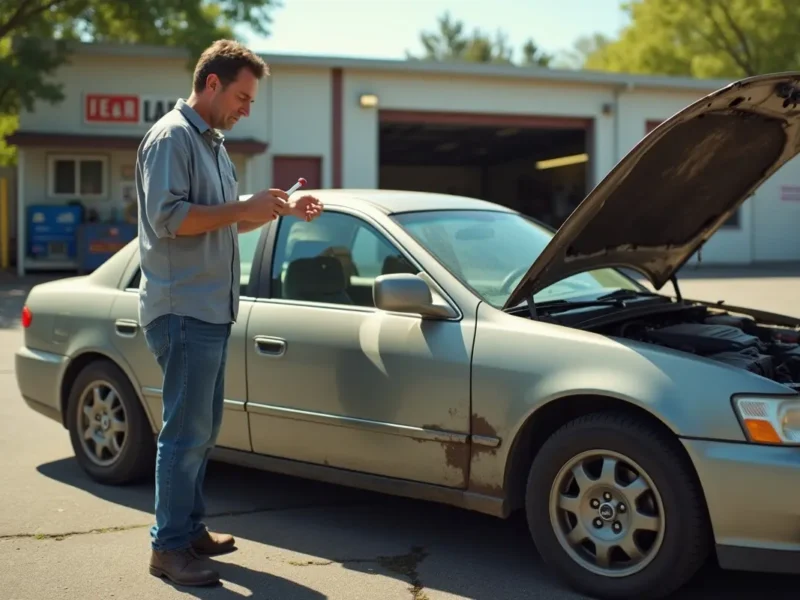Receiving a cease and desist letter can be a daunting and intimidating experience. It can feel like a daunting task to even consider what to do next, and it can leave you feeling confused and overwhelmed. Depending on the type you receive, there are strategies and tips for cease and desist letters that you can take to properly address the situation. It’s important to remember that ceasing and desisting is not necessarily an indication of guilt or wrongdoing but rather a means of protecting one’s legal rights.
In this blog post, we will explore the steps you should take when you receive a cease and desist letter, as well as tips for avoiding future legal issues. We will also discuss the potential consequences of not following the instructions outlined in the letter. By understanding what a cease and desist letter is and how to handle it appropriately, you can protect yourself from potential legal issues and ensure that your business rights are respected.
Contents
- 1 Remain Calm
- 2 Read the Cease and Desist Letter Carefully and Completely
- 3 Identify the Alleged Infringement
- 4 Consider the Allegations and Facts
- 5 Contact the Relevant Government Agencies
- 6 Seek Legal Advice
- 7 Negotiate if Possible
- 8 Consider Your Options
- 9 Take Action
- 10 Document the Process
- 11 Finding the Right Attorney for You
- 12 Conclusion
Remain Calm
Upon receiving a cease and desist letter, it is natural to feel panicked and overwhelmed. However, it is important to remain calm and take a measured approach to deal with the situation. You can mitigate potential damages and protect yourself by responding with a level head.
First and foremost, read the letter carefully to understand the allegations and the requested action. Once you have a clear understanding of the contents, you can make an informed decision on how to proceed. It may also be beneficial to seek legal advice to ensure you are taking the appropriate action in response to the letter.
Read the Cease and Desist Letter Carefully and Completely
When you receive a cease and desist letter, the first step is to read it carefully and completely. This is especially important if the letter includes legal language, as this language can be difficult to understand. Make sure you understand the letter’s contents before taking any action.
It is recommended that you seek legal advice to ensure that you understand the legal implications of the letter. Additionally, even if you understand the letter, it is important to keep a record of it in case you need to refer to it in the future.
Identify the Alleged Infringement
The third step in responding to a cease and desist letter is to identify the alleged infringement. It is important to be aware of the specific allegations of infringement and to understand the legal basis of the claims.
A cease and desist letter should specify the infraction at issue in sufficient detail to allow you to determine precisely what has been alleged. In addition, the letter should include the legal authority that supports the claims being made. It is important to carefully examine the allegations and to understand the legal implications of the claims being made.
Consider the Allegations and Facts
Once you have received a Cease and Desist Letter, it is important to take time to carefully consider the allegations and facts presented. Review the document as if you were a judge, and read between the lines to identify the points that need to be addressed. Ask yourself whether the allegations are accurate and if there is any evidence that could possibly disprove them.
In addition, consider whether the plaintiff has a valid claim for damages and, if so, examine the amount being requested. Doing this will help you determine whether the letter is legitimate and what your next steps should be.
Contact the Relevant Government Agencies
After receiving a cease and desist letter, it may be wise to contact the relevant government agencies to ensure the letter is valid. This is especially important if you are unsure of the validity of the letter or the claims being made. You should also research any government regulations that may be applicable to your situation and obtain any necessary licenses and permits. Additionally, you should be aware of any applicable filing deadlines and take action accordingly in order to protect your interests.
Seek Legal Advice
After you receive a cease and desist letter, it is essential to seek legal advice. It is important to understand your legal rights and obligations as soon as possible and to consider whether or not you should take legal action. Your attorney can help you assess the merits of the claim and discuss possible defenses or a strategy for responding to the letter. An attorney can also provide guidance and advice on how to protect your legal interests.
Negotiate if Possible
When faced with a cease and desist letter, negotiation may be an option. Negotiating a resolution with the other party is often a better alternative to taking the issue to court. Negotiations can be used to resolve disputes without having to go through costly and time-consuming litigation. It also allows for a mutually beneficial solution to be negotiated that both sides can agree on.
Negotiations should be conducted in a professional manner and with the assistance of an experienced lawyer. It is important to remember that negotiation is a process, and both parties should be willing to compromise in order to come to a mutually beneficial solution.
Consider Your Options
The eighth step when receiving a cease and desist letter is to consider your options. Depending on the nature of the allegations, a swift resolution may be achieved by simply addressing the concern in the letter. However, if the allegations are serious or the sender is unwilling to come to a reasonable agreement, other methods may need to be pursued.
You may need to consult with a lawyer, file a counterclaim, or take the matter to court. Consider all possibilities and weigh the risks and benefits of each option before making a decision.
Take Action
The ninth step to take when you receive a Cease and Desist letter is to take action. Depending on the nature of the letter and the facts and circumstances of the case, this action could involve engaging in settlement discussions with the sender, challenging the allegations in the letter, or taking some other appropriate action. It is important to act quickly and carefully to ensure that your rights are protected and that the legal issues are addressed in a timely manner.
Document the Process
When you receive a cease and desist letter, it is important to document the process. Make sure to take note of the date of the letter, the specific parties involved, and the content of the letter. Additionally, if you have a lawyer, make sure to keep a record of all of your communications with them regarding the incident. This will help ensure that you have all the information that you need in the event that the cease and desist letter leads to any legal action in the future.
Finding the Right Attorney for You
Research Potential Attorneys
When you receive a cease and desist letter, it’s essential to research potential attorneys who can help you respond to the letter. Start by making a list of possible attorneys in your area and reading reviews about them. You should also check to make sure the attorney has experience responding to cease and desist letters.
Once you’ve found an attorney that meets your criteria, reach out to them and ask any questions you may have. Make sure to also ask them if they are familiar with the laws that apply to your situation.
Evaluate Their Experience and Expertise
Once you have identified a few potential lawyers, the next step is to evaluate their experience and expertise. Ask each lawyer what experience they have in handling cease and desist letters and intellectual property matters. Ask for references and carefully review the lawyer’s background.
Make sure that the lawyer you select is an expert in the relevant areas of law and has the experience and skill to handle the matter quickly and effectively. Additionally, ensure that the lawyer is prepared to represent you all the way to trial if necessary.
Discuss Fees and Payment Options
When you have selected the lawyer you feel is best suited to your case, it is time to discuss fees and payment options. Most lawyers charge by the hour or by the session, so it is important to ask the lawyer to explain their fee structure. Additionally, ask if they accept payment plans or if they require a retainer – this is a lump sum of money that is held by the lawyer to cover any immediate costs associated with the case. Be sure to get a clear understanding of the payment structure as well as the total cost before signing any agreements.
Review the Proposed Legal Strategy.
After the initial consultation and assessment, you and your lawyer will review the proposed legal strategy. This step is crucial in developing a successful strategy to protect your rights. Depending on the specifics of your case, your lawyer may recommend a variety of strategies, such as filing a motion to dismiss, filing a counterclaim, or negotiating a settlement.
It is important to carefully consider each option and understand the potential risks and benefits before deciding on the best course of action. Your lawyer can provide invaluable advice and guidance during this process.
Conclusion
Receiving a cease and desist letter can be a stressful and intimidating experience. It is important to take it seriously and respond promptly with the appropriate action. Consult with a qualified attorney to ensure you understand your rights and obligations and that you respond in the most effective way possible. Taking the right steps in response to the letter can help you avoid legal action and maintain your reputation.



